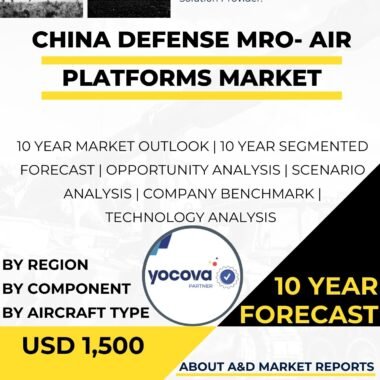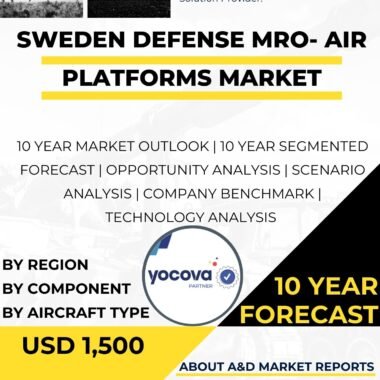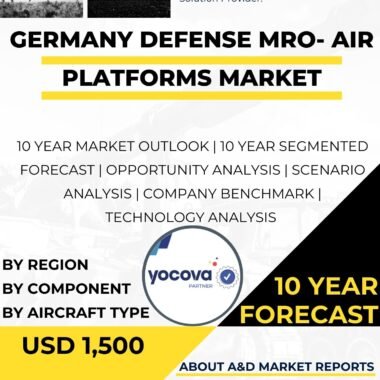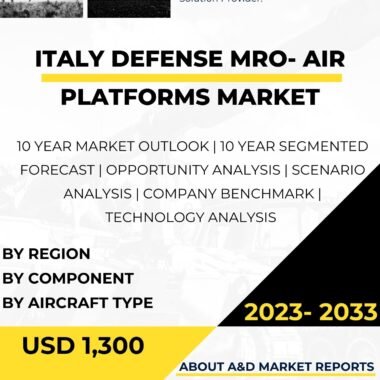Description
The United States plays a pivotal role in driving global aluminum demand within the Aerospace and Defense industry. This demand is underpinned by several factors that highlight aluminum’s importance as a critical material for the construction of aircraft, military vehicles, and other defense-related applications. With its exceptional strength-to-weight ratio, corrosion resistance, and versatility, aluminum has become an indispensable component in the manufacturing of both civilian and military aerospace and defense equipment.
One of the primary drivers of aluminum demand in the Aerospace and Defense industry is the need to reduce the weight of aircraft and military vehicles. Aluminum alloys, known for their lightweight properties, allow manufacturers to achieve significant weight savings without compromising structural integrity. In an era where fuel efficiency and operational range are paramount, the use of aluminum helps aircraft and military vehicles achieve better performance, lower fuel consumption, and extended operational capabilities. As governments and private aerospace companies continuously seek to enhance their fleets’ efficiency and range, the demand for lightweight aluminum components remains robust.
Aluminum’s corrosion resistance is another critical factor contributing to its demand in the aerospace and defense sectors. Aircraft and military equipment often operate in challenging environments, including exposure to moisture, salt, and extreme temperatures. Aluminum’s natural resistance to corrosion ensures that vital components remain durable and reliable over time, reducing maintenance costs and increasing overall operational efficiency. In naval applications, aluminum’s resistance to saltwater corrosion is particularly advantageous, as it helps prolong the lifespan of naval vessels and maritime assets.
The versatility of aluminum alloys further fuels their demand within the Aerospace and Defense industry. Aluminum can be readily formed, machined, and welded, making it an ideal material for various components, including airframes, fuselages, armor, and structural parts. This versatility enables manufacturers to tailor aluminum components to meet specific performance and design requirements, driving its continued adoption across a wide range of aerospace and defense applications.
Furthermore, the Aerospace and Defense industry’s emphasis on sustainability and environmental considerations aligns with aluminum’s recyclability and eco-friendly attributes. Aluminum is fully recyclable without compromising its mechanical properties, allowing manufacturers to reduce their environmental footprint by reusing and recycling aluminum materials. As sustainability becomes an integral part of aerospace and defense strategies, the demand for aluminum, with its eco-friendly characteristics, is likely to increase.
The United States, as a global leader in aerospace and defense, significantly influences the global aluminum market’s dynamics. The nation’s aerospace industry boasts some of the world’s largest aircraft manufacturers, such as Boeing and Lockheed Martin, which have extensive supply chains and manufacturing facilities that require a substantial amount of aluminum. Additionally, the U.S. Department of Defense, with its significant budget allocation for military modernization and procurement, relies heavily on aluminum for the construction of military aircraft, vehicles, and naval vessels.
In conclusion, aluminum’s demand within the Aerospace and Defense industry is firmly rooted in its unique combination of lightweight properties, corrosion resistance, versatility, and eco-friendly characteristics. These qualities align with the industry’s imperatives to reduce weight, enhance durability, and address sustainability concerns. The United States, as a prominent player in this sector, exerts a substantial influence on global aluminum demand, with its aerospace giants and military requirements driving the continued growth of aluminum usage in defense and aerospace applications worldwide.




